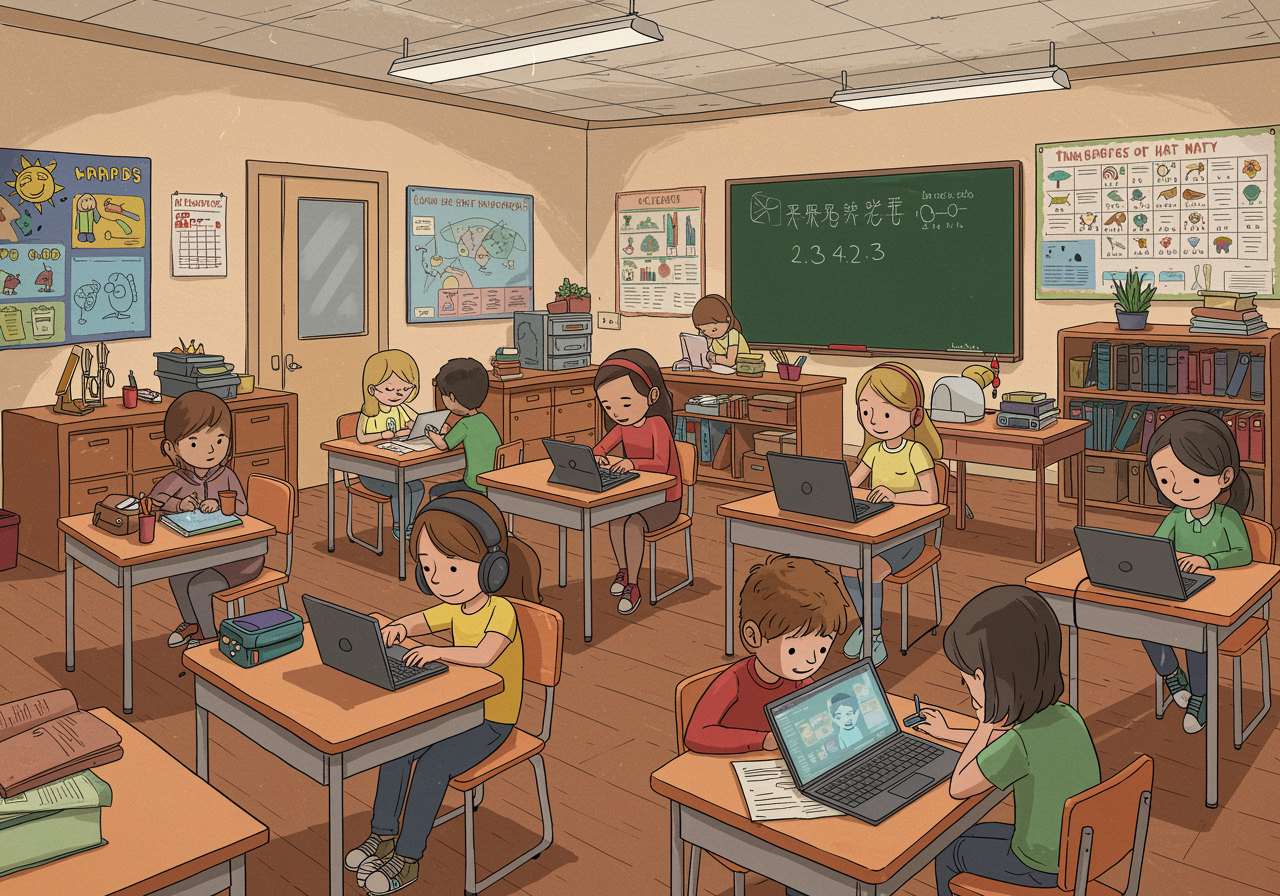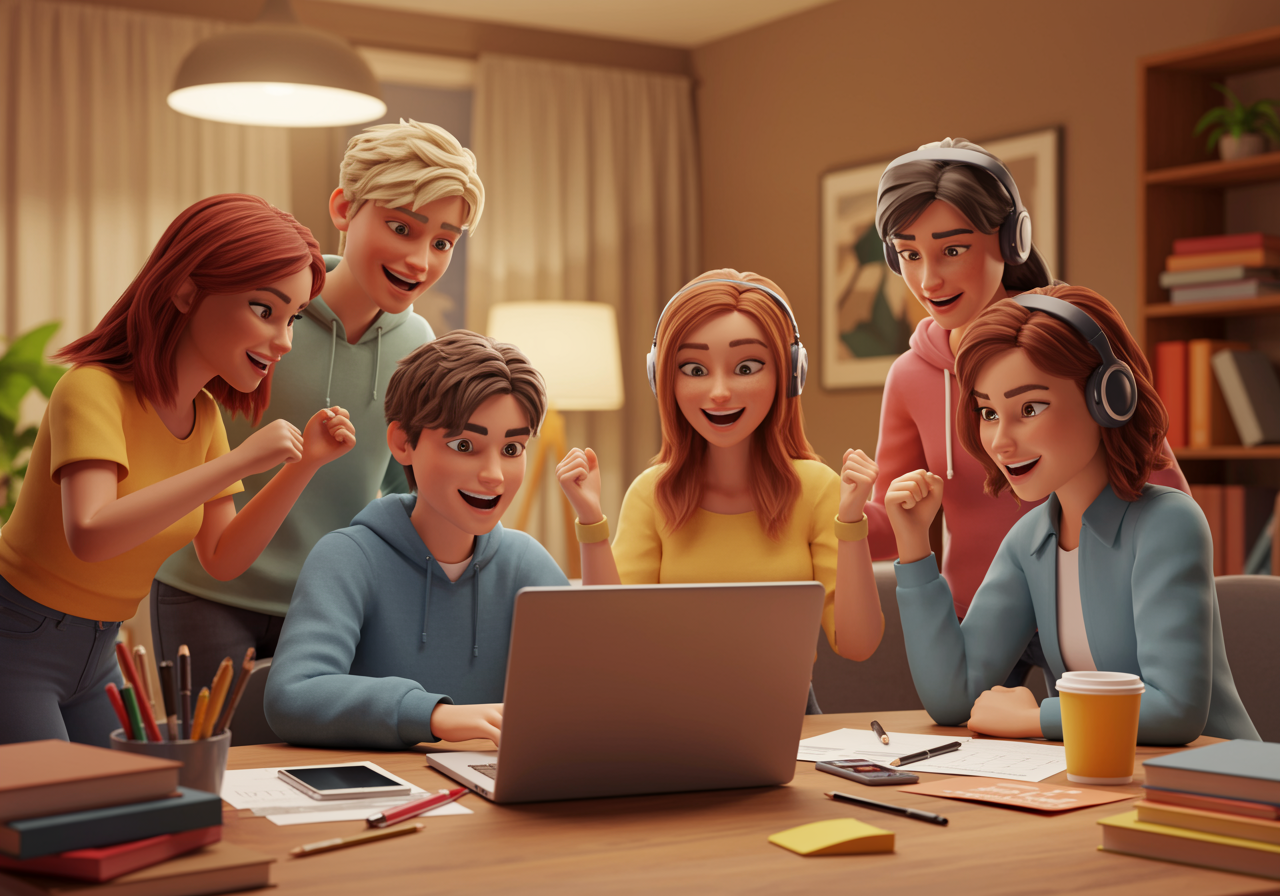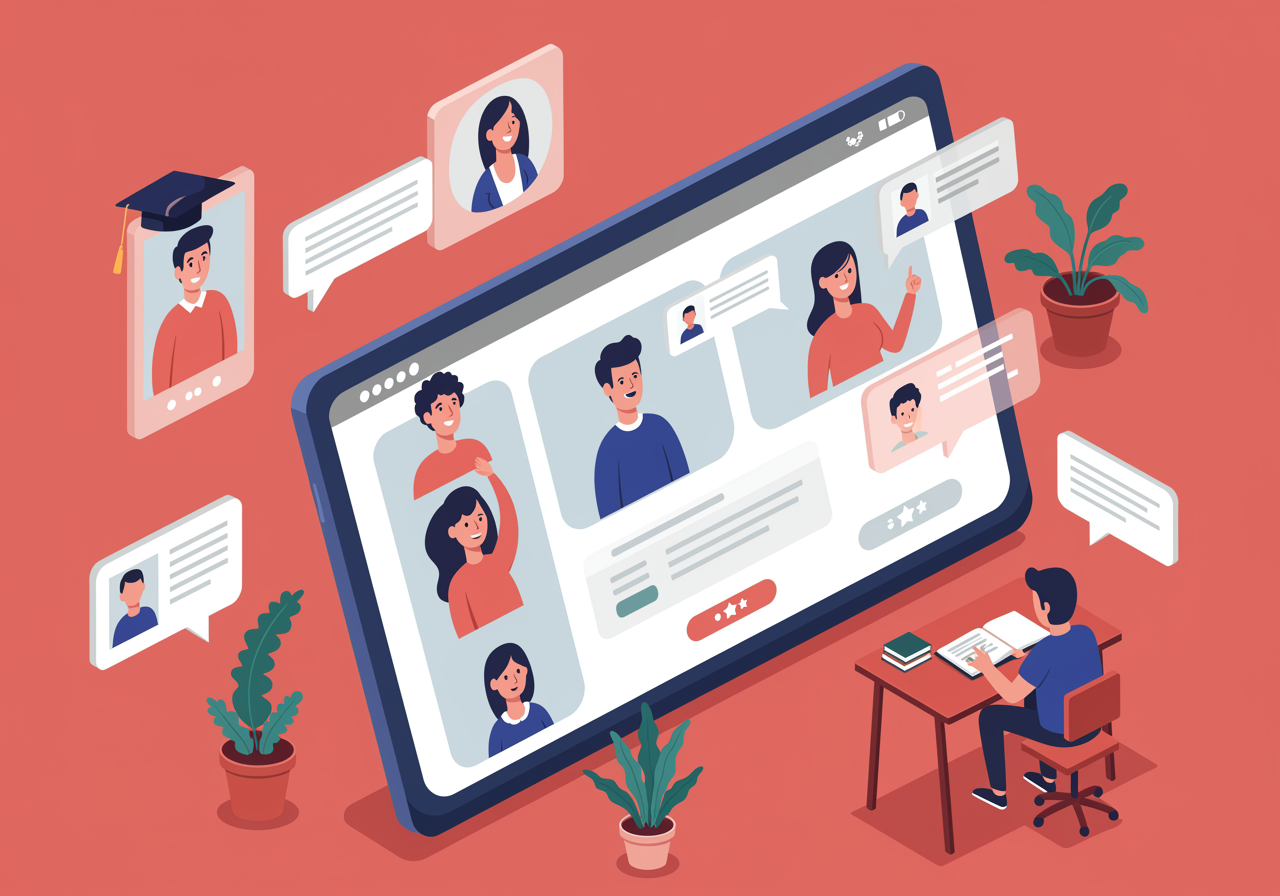From Chalkboards to Chatbots: How Tech is Totally Transforming School Life

Discover how digital tools are reshaping classrooms and friendships in ways that would blow your grandparents’ minds!
Explore with your teen how technology is revolutionizing education and social connections in ways that are both exciting and worth thinking about together.
Overview
Think about it – your teen's school experience looks nothing like yours did! From taking notes on tablets to collaborating on group projects through video calls, technology has completely transformed how students learn and connect. But here's the cool part: this shift brings both amazing opportunities and interesting challenges that are worth exploring together. Understanding how these digital tools shape your child's daily school life can help you both navigate this brave new world of learning with confidence and curiosity.

Understand in 30 Seconds
Get up to speed quickly
- Learning Goes Digital: Students now access lessons, submit homework, and even take tests on computers and tablets instead of just using paper and pencils.
- Virtual Collaboration Rules: Kids work together on projects through shared documents and video calls, even when they're not in the same room or even the same country!
- Information at Lightning Speed: Research that used to take hours in a library now happens in seconds with search engines, but this also means learning to spot reliable sources.
- Social Connections Evolve: Friendships and classroom discussions now happen both face-to-face and through messaging apps, group chats, and online platforms.
Real Life Scenario
Situations you can relate to
Imagine your teen comes home and says they just had a group project meeting with classmates from three different continents through their computer screen! One teammate shared a presentation from Japan, another edited a document live from Canada, and your child added research from right here at home. During lunch, instead of passing paper notes, kids might share memes in group chats or collaborate on a digital art project. But here's where it gets interesting – what happens when the wifi goes down? Or when someone feels left out because they don't have the latest device? How do kids balance screen time with face-to-face conversations? These are the questions that make this topic so fascinating to explore together.

Role Play
Spark a conversation with “what if” scenarios
What if your school decided to go completely paperless for one week?
- Role play: Take turns being a student and teacher trying to navigate a day without any paper – how would you take notes, turn in homework, or even pass a note to a friend?
What if you had to teach your grandparent how to use your school's learning app?
- Role play: One person plays the confused grandparent asking lots of questions, while the other explains how to log in, find assignments, and submit work patiently.
What if your internet went down right before a big online presentation?
- Role play: Brainstorm creative backup plans together – could you use your phone's hotspot, present at a friend's house, or create an old-school poster presentation?
FAQs
Frequently asked questions people want to know
Is too much screen time in school bad for kids?
It's all about balance! Schools are learning to mix digital tools with hands-on activities, outdoor time, and face-to-face discussions to keep learning well-rounded.
What if my child's school doesn't have the latest technology?
Great learning happens with or without fancy gadgets! Many schools creatively use whatever tech they have, and sometimes simpler tools help students focus better on the actual learning.
How can parents keep up with all these new school technologies?
Ask your child to be the teacher! Kids love showing parents how their school apps work, and it's a great way to start conversations about their digital school experience.
Examples in the Wild
See how this works day to day
- Students in rural Alaska now take advanced math classes through video calls with teachers in urban areas, giving them access to courses their small schools couldn't offer before. (Education Week)
- High schoolers in Chicago collaborated with students in Kenya on a climate science project using shared digital tools and video conferences. (National Geographic Education)
- A middle school in Texas uses VR headsets to let students 'walk' through ancient Rome and explore the human circulatory system from the inside. (EdTech Magazine)
- Students with learning differences now use voice-to-text apps and audiobooks to access the same curriculum as their classmates in new ways. (Understood.org)
In Summary
What you should know before you start
- Technology has transformed schools from paper-and-pencil places to digital collaboration hubs where students connect globally
- Students now access information instantly but must learn to evaluate what's reliable and what's not
- Social interactions blend face-to-face conversations with digital communication in new and evolving ways
- The key is finding balance between embracing helpful tech tools and maintaining human connections and critical thinking skills
Pro-tip for Parents
You got this!
When your teen talks about school technology, resist the urge to immediately worry about screen time or compare it to 'how things used to be.' Instead, ask them to show you what they're learning and how the technology helps them understand concepts better. Often, they'll reveal both the cool benefits and the frustrating challenges on their own, leading to much richer conversations about digital balance and learning.

Keep an Eye Out For
Find these examples in everyday life
- Notice when your child mentions collaborating with classmates online – ask about how they communicate and solve problems together digitally
- Watch for news about AI tools in education, like ChatGPT policies in schools, which spark great discussions about creativity versus shortcuts
- Pay attention to how your child's school communicates with families through apps or portals – it's a conversation starter about how technology changes parent-school relationships too
Explore Beyond
Look up these related research topics
- How artificial intelligence and machine learning are starting to personalize education for individual students
- The digital divide and how access to technology affects educational opportunities around the world
- How social media and online communication are changing teenage friendships and social skills